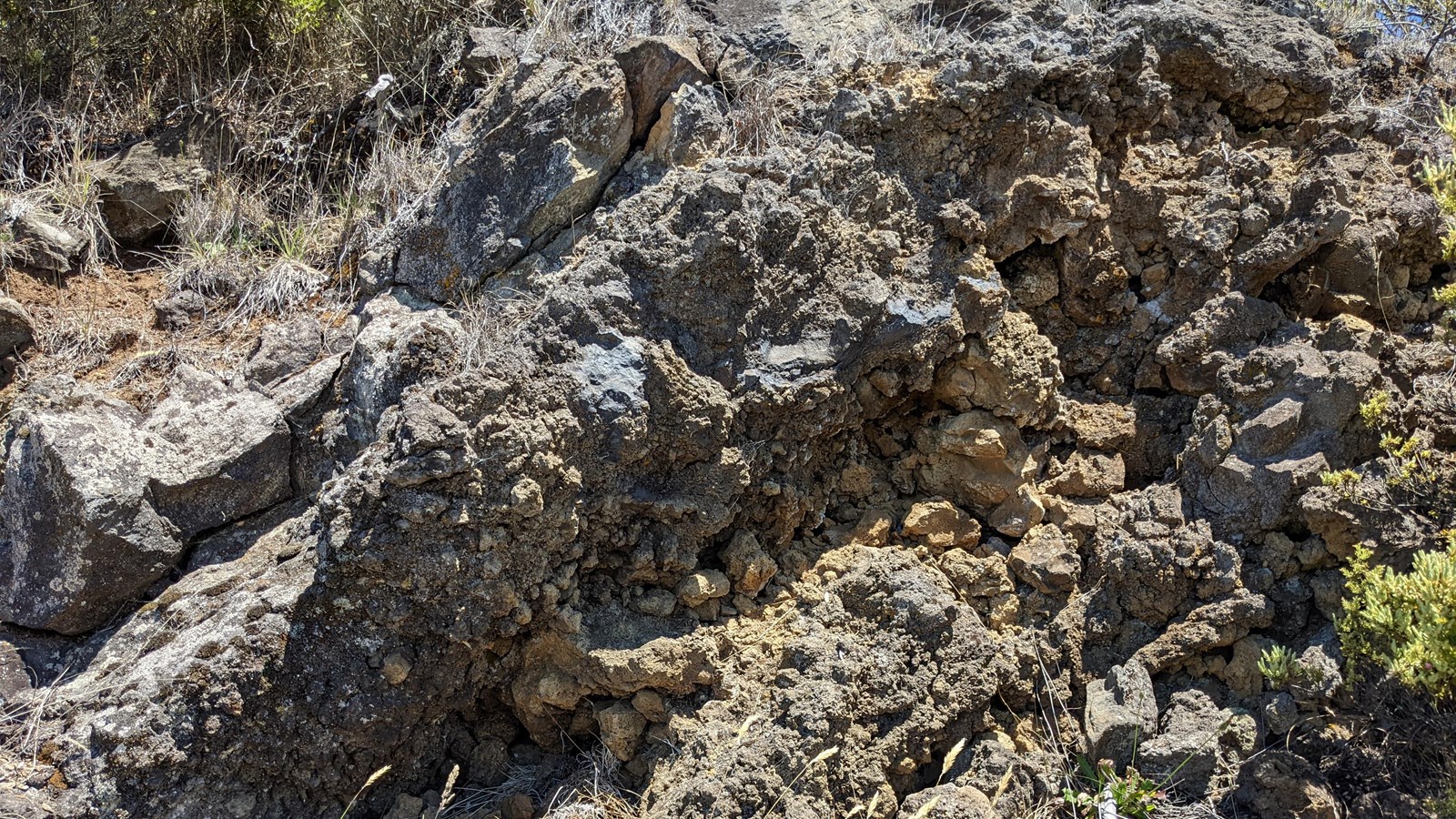Last updated: June 13, 2022
Place
Headquarters Pull-Off

NPS photo
Quick Facts
Location:
Summit District
Significance:
Stop 2 on the Geology Road Tour
Amenities
1 listed
Cellular Signal
What kind of story does your body tell about your experience? Maybe you have calluses on your hands, or freckles from time in the sun. Volcanoes also change as they age and based on their surroundings. Sometimes they change gradually and other times violently. The “body” of a volcano is shaped by eruptions and erosion. By looking at the dark, porous rocks in the roadcut beside this pull-out, you can see evidence of how this volcano has grown.
Like most Hawaiian volcanoes, the shield shape underlying Haleakalā is the result of effusive and mildly explosive volcanic activty. Effusive eruptions are the quiet kind that produce steadily flowing pāhoehoe and ‘a‘ā lava. These effusive basaltic eruptions are so abundant throughout Hawai‘i that geologists use those Hawaiian words to describe similar eruptions around the world. Mildly explosive eruptions are the kind that shoot gas and molten rock material into the air. At Haleakalā, most eruptions had both a mildly explosive (fire-fountaining) and effusive (lava) phase. Any eruption here would have been very mild compared to Mt. St. Helens, Vesuvius, or Krakatoa.
Standing on the shoulder of the pull-off, you are facing a road-cut through several rock layers. These rock layers are mafic–cooled from a melt (igneous), heavy with iron and magnesium, and dark in color. The mafic rocks you see are basaltic lava flows that cooled and hardened on the volcano’s surface (extrusive), rather than inside of the volcano (intrusive). The lava flows on this volcano can take two forms–pāhoehoe and ‘a‘ā. At this stop, the layers are ‘a‘ā. ‘A‘ā lava moves downhill in open channels, a dense central core sandwiched between rubbly layers called “clinker”. Can you find the dense core of this lava flow and layers of rubbly clinker above and below?
Like most Hawaiian volcanoes, the shield shape underlying Haleakalā is the result of effusive and mildly explosive volcanic activty. Effusive eruptions are the quiet kind that produce steadily flowing pāhoehoe and ‘a‘ā lava. These effusive basaltic eruptions are so abundant throughout Hawai‘i that geologists use those Hawaiian words to describe similar eruptions around the world. Mildly explosive eruptions are the kind that shoot gas and molten rock material into the air. At Haleakalā, most eruptions had both a mildly explosive (fire-fountaining) and effusive (lava) phase. Any eruption here would have been very mild compared to Mt. St. Helens, Vesuvius, or Krakatoa.
Standing on the shoulder of the pull-off, you are facing a road-cut through several rock layers. These rock layers are mafic–cooled from a melt (igneous), heavy with iron and magnesium, and dark in color. The mafic rocks you see are basaltic lava flows that cooled and hardened on the volcano’s surface (extrusive), rather than inside of the volcano (intrusive). The lava flows on this volcano can take two forms–pāhoehoe and ‘a‘ā. At this stop, the layers are ‘a‘ā. ‘A‘ā lava moves downhill in open channels, a dense central core sandwiched between rubbly layers called “clinker”. Can you find the dense core of this lava flow and layers of rubbly clinker above and below?
